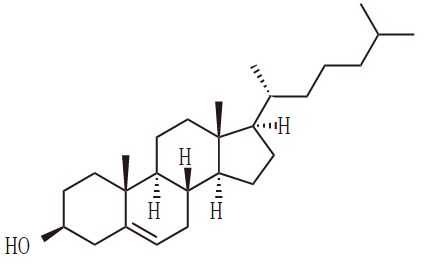挑战常规!“好胆固醇”越高不一定越好,更可能增加早逝风险
人总胆固醇指的是人血液中胆固醇总含量,包括结合到极低密度脂蛋白(VLDL)、低密度脂蛋白(LDL)、中密度脂蛋白(IDL)和高密度脂蛋白(HDL)等蛋白上的胆固醇,其中结合到HDL上的胆固醇被称作高密度脂蛋白胆固醇(HDL cholesterol, HDL-C)。HDL-C经常被吹捧为有助降低中风和心脏病发作风险的“好胆固醇”。结合到低密度脂蛋白的胆固醇被称作低密度脂蛋白胆固醇(LDL-C)。LDL-C被认为是“坏胆固醇”,这是因为它导致能够堵塞动脉的斑块产生,使得动脉柔韧性变差。
在一项新的大规模流行病研究中,来自美国华盛顿大学圣路易斯医学院和退伍军人事务部圣路易斯医疗保健系统(Veterans Affairs St. Louis Health Care System)的研究人员发现高水平和低水平的HDL-C可能会增加一个人过早死亡的风险。相反,中间水平的HDL-C可能能够增加寿命。相关研究结果于2016年8月10日在线发表在Clinical Journal of the American Society of Nephrology期刊上,论文标题为“High Density Lipoprotein Cholesterol and the Risk of All-Cause Mortality among U.S. Veterans”。
论文通信作者、华盛顿大学医学助理教授Ziyad Al-Aly博士说,“这些发现让我们感到吃惊。人们之前认为水平升高的好胆固醇是有益的。水平增加的HDL-C和较早死亡之间存在关联性是意料之外的,而且迄今为止还没有完全弄清楚。这将需要进一步开展研究。”
胆固醇是一种在血液中发现的脂肪物质,能够让血管变窄和阻断血管,从而导致心血管疾病和中风。多年来,HDL-C一直被誉为有助于从动脉中移除形成斑块的“坏胆固醇”。
在这项研究中,研究人员从2003年10月到2004年9月研究了170万多名男性退伍军人体内的肾脏功能和HDL-C水平。此后,研究人员对对这些退伍军人进行追踪研究,一直到2013年9月为止。
肾病患者体内经常含有更低水平的HDL-C,这可能解释了他们的较早死亡风险死亡增加了;然而,在这些患者当中,水平增加的HDL-C与过早死亡之间的关联性一直是不清楚的。在当前的这项研究中,研究人员发现在参与这项研究的具有各种肾脏功能的患者当中,高水平HDL-C和低水平HDL-C与增加的死亡风险存在关联。
Al-Al说,“这些发现可能解释了旨在增加HDL-C水平的临床试验不能够改善临床结果。”
Al-Aly说,这些关于HDL-C和过早死亡的发现还未在其他加快理解胆固醇参数与临床结果之间关系的大型流行病学研究中得到报道。
他说,“然而,之前的研究总是存在局限性,这是因为在这些队列研究(cohort study)中,患者的数量相对较小,而在我们的这项新的研究中,我们采用了一种大数据方法进行分析。大数据允许更加细致入微地在整个HDL-C水平范围内研究HDL-C与死亡风险之间的关系。”
Al-Aly说,“研究数据表明HDL-C水平与死亡率之间存在一种U形曲线关系,在曲线的两端,死亡风险增加了。太低和太高水平的HDL-C与更高的死亡风险相关联。”
Al-Aly说,维持中间水平的HDL-C是否可能增加寿命将需要在未来的研究中进行进一步探究。
High Density Lipoprotein Cholesterol and the Risk of All-Cause Mortality among U.S. Veterans
Benjamin Bowe, Yan Xie*, Hong Xian*,†, Sumitra Balasubramanian*, Mohamed A. Zayed*,‡,§, Ziyad Al-Aly
doi:10.2215/CJN.00730116
PMC:
PMID:
Background and objectives The relationship between HDL cholesterol and all-cause mortality in patients with kidney disease is not clear. We sought to characterize the relationship of HDL cholesterol and risk of death and examine the association by eGFR levels.
Design, setting, participants, & measurements We built a cohort of 1,764,986 men who were United States veterans with at least one eGFR between October of 2003 and September of 2004 and followed them until September of 2013 or death.
Results Patients with low HDL cholesterol and low eGFR had a higher burden of comorbid illnesses. Over a median of 9.1 years (interquartile range, 7.7–9.4 years), 26,247 (40.1%), 109,222 (32.3%), 152,625 (29.2%), 113,785 (28.5%), and 139,803 (31.8%) participants with HDL cholesterol ≤25, >25 to <34, ≥34 to ≤42, >42 to <50, and ≥50 mg/dl died. In adjusted survival models, compared with the referent group of patients with low HDL cholesterol (≤25 mg/dl), intermediate HDL cholesterol levels (>25 to <34, ≥34 to ≤42, and >42 to <50 mg/dl) were associated with lower risk of death across all levels of eGFR. The lower risk was partially abrogated in those with high HDL cholesterol (≥50 mg/dl), and the risk of death was similar to the referent category among those with eGFR<30 or ≥90 ml/min per 1.73 m2. Analysis by HDL cholesterol deciles and spline analyses suggest that the relationship between HDL cholesterol and death follows a U-shaped curve. There was a significant interaction between eGFR and HDL cholesterol in that lower eGFR attenuated the salutary association of HDL cholesterol and risk of death (P for interaction <0.01). Presence of coronary artery disease attenuated the lower risk of high HDL cholesterol and all-cause mortality in those with eGFR≥60 ml/min per 1.73 m2 (P for interaction <0.05).
Conclusions Our results show a U-shaped relationship between HDL cholesterol and risk of all-cause mortality across all eGFR categories. The risk is modified by eGFR and cardiovascular disease.
 此主题相关图片如下:1.png
此主题相关图片如下:1.png